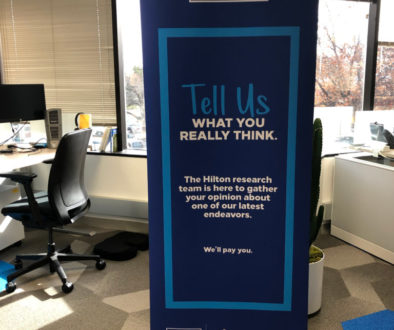Design, Info Sci, & Anthro Oh My!
I am frequently approached by students, as well as other professionals looking to further their career, on how an interdisciplinary approach has directed my career and where I hope to go from here. It’s been a while and job change or two since I last wrote about this. So, I thought I’d take the opportunity again to delve into my particular career path, lessons learned, and how I combine academics with technology to provide interdisciplinary insights into both research and design.
Buckle up because this is going to be a long post! For a more succinct summary, visit my online CV and portfolio.
In the beginning…
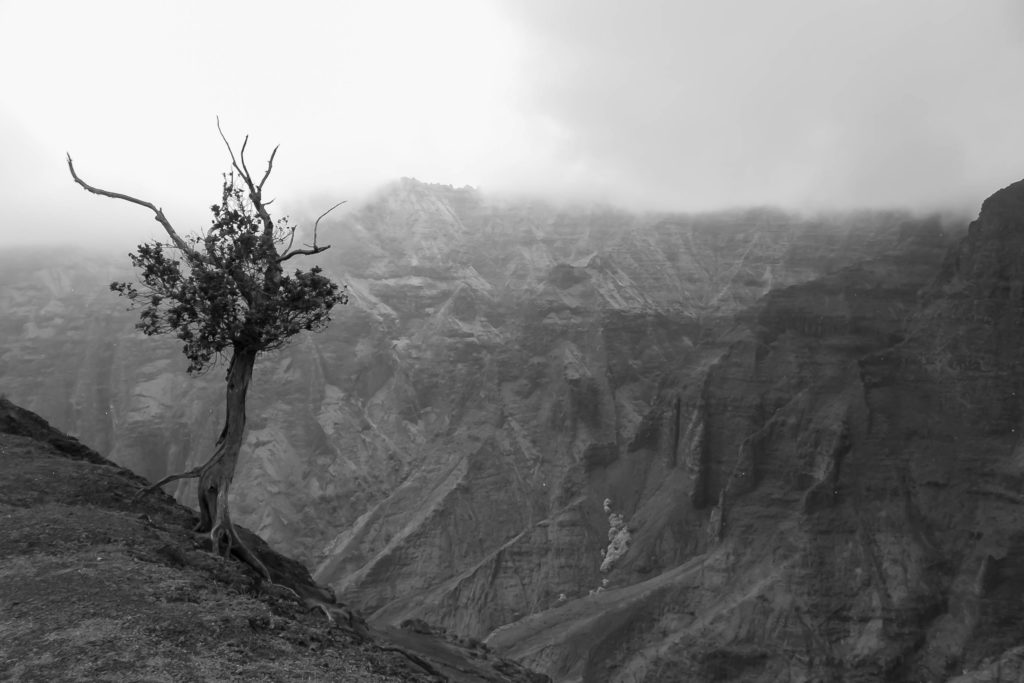
I started in photography back in the late 90s. And by photography I mean film and darkrooms and medium format cameras and black and white and doing a lot of things by hand.
It was the subject of my first degree (along with graphic arts) and I also worked at pro photo labs (using paint to hand touchup color printed photos or getting sprayed in the face by bleach bypass are things I’ll never forget) for a bit before landing my first job in the computer industry.
Photography taught me a lot of things including patience and technique are more important than hardware or software. I also learned about light, contrast, textures, movement, color theory, focus, and layout — all of which I continue to use to this day.
Darkrooms are one of my original happy places, and though I have yet to watch Stranger Things (hey! I don’t get to watch a lot of TV with all of the other things I have going on), I do appreciate the fact that apparently, they had a darkroom scene. Maybe some interest will spike again. It’s retro now, so that makes it cool, right?
Photography to… Computer Customer Support?
My photography degree also included graphic design and I’m talking old school graphic design here where it was meant for print, not the web. My photography skills blended well with this subject and I also learned things like Quark Express, Photoshop, Illustrator, and more. In addition to the applications, I also learned my way around a Macintosh and this is how I jumped into technology.
Turns out, I had quite the aptitude for working with computers (even though I didn’t grow up with them or even own one of my own until 1999). Here is where chance met happenstance. At the time, Apple had a call center in Dallas and I knew quite a few people who worked there. After talking about needing a new job, I was given a Mac for Dummies book, told what chapters to read, and sent in for an interview.
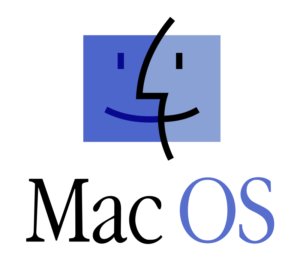
I was all of 19 at the time and was still working on my first degree, but in those days a bachelor’s degree was not required for work like this. That, and no one had any experience. So as long as you showed aptitude and had a good attitude, you were given a chance. I took that chance and ran with it.
I worked there for a little over a year and in that time I learned how to support every single thing Apple made from monitors to printers to all of their desktop computers including the G3 and OSs 7, 8, and 9. I went from level 1 to level 2 support and then I became the trainer for all new waves starting on the floor. I left the company just as the iMacs were coming out and they were pulling their support out of Dallas down to Austin.
I followed that job with a stint in the print industry (I’ll get to that in a minute) and then to support at 3dfx, which was one of the best jobs I’ve had to this day. Turns out, a lot of the people who ran the support center for Apple in Dallas moved to 3dfx to do the same thing for them after Apple went to Austin. I was brought on to support the Macintosh video cards, but supported the PC line until they came out. Funny thing was, I was the only one they hired to do Mac support, which meant at the tender age of 22 I owned it all (6 days a week, 12 hours a day, phones, emails, and forums – the overtime was lovely) and I loved every bit of it.
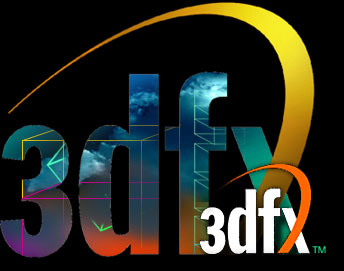
It was for 3dfx that I went on my first business trips. I was sent to California (my 2nd time ever on a plane) to QA the Macintosh cards in graphic arts applications. While this wasn’t the focus of 3dfx, they understood who their market was and wanted to make sure there were no problems with these, plus I had experience!
I also represented 3dfx at MacWorld 2000 where I was the tech for every computer on the floor and I demoed video game playthroughs before it was cool (PodRacer) to show the difference between the stock video card and ours.
After they realized the workload was more than they bargained for, I then became a trainer at 3dfx (see a trend here yet?). To help me do this with our European teams, I developed a Mac training support program (all screenshots and hotspots hand programmed in HTML), and used it to assist people in learning how to support a Mac without ever touching one. You could say this was the first application I ever developed, though at the time I never thought of it as such.
Gaming has always been a passion of mine, so this was the best of all worlds. Sadly, 3dfx went out of business and I was laid off as the company folded. Though I’ve yet to land another job in the gaming industry, that has always been a goal of mine and I still hope to do so.
Being in technical support taught me a lot that has served me well throughout the rest of my career.
- I am not the person on the other end
No matter how much I knew about the technology or how many games I played or how I used it for myself, I was not the person on the other end of the phone/email/forum post. Why does this matter? Well, everyone’s experience is different and there was always some variable that came up that I had never encountered. It provided both a learning opportunity for me and made sure that my focus was on the person on the other end rather than the technology or the problem. - There is always more than 1 way to solve a problem
I’ve mentioned this in a few papers I’ve written on gaming as a part of my academic career, but it’s so important that it’s also worth noting here. Whether it is technology or gaming or development, you soon learn that when you get stuck it helps to evaluate the situation from multiple perspectives. - Community makes a difference
And this is probably one of the reasons why I gravitated toward Anthropology when I started my bachelor’s degree. I learned early on what a difference a community can make in the workplace, online, and around a common goal. Techsupport, especially back in the late 90s and early 2000s, was a place where all three of these came together in a way I’ve only ever seen replicated in open source development and gaming.
Electronic PrePress
I worked in the print industry for about a year. How did I end up there? Well, I answered an ad in the local paper (back when they were printed on paper) for a Mac Tech. I thought, well hey, I’m a Mac Tech. Turns out they were looking for an electronic pre-press (EPP) operator. I told the guy doing the hiring that if he hired me I could learn very quickly and I could fix/support every computer he had in his shop.
And yet again, someone gave me a chance and I ran with it. By the time I left, I was an expert in Quark and Photoshop and a layout artist and I could do random things by hand that no one has to deal with today like trapping colors and sending work to a rip to print to film and evaluating bluelines and finally to printing on web presses in the back of the shop. This all reinforced the focus and layout, and color theory from my photography days and I was able to support it all with my love for technology.
Early Academics
As I mentioned before, I started with an AA in photography and graphic design. After I was laid off from 3dfx I applied for a certificate program in Intermedia arts. Only 10 students were selected based on their submitted portfolios (mine was mostly photography). In that program, I learned digital music (MIDI, ProTools, MOTU), digital photography (digital cameras in 2001! and photoshop), digital video (Final Cut Pro), 3D Animation (Cinema 4D), and web design (HTML). Since it was all on Macs, I also took up a position as the lab assistant. There were no web design degrees at that time, so this was the best I could do and it helped me land my next job.
(Unfortunately, I have almost no examples of this work, as it was all on DVDRAMs, except for this silly digital music piece.)
Software Development
Yet again, someone took a chance and hired me for a job I was not qualified for. This is a definite theme throughout my career. The first step is me taking a chance and applying for a job I’ve never had. I highly recommend this. The worst someone can do is say no. The best is you land an opportunity to shine.
Though I had never had a job as a web developer, not many other people had either in 2002. Everything I knew about web development I had either learned on my own or as a part of my certificate program I completed in 2001. I used all of that to my advantage. Additionally, I knew how to support a Macintosh server and the company who was hiring specifically needed someone versed in Mac.
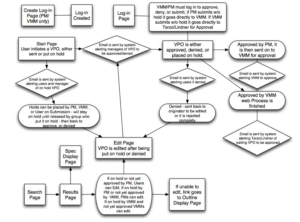
What started out as a simple HTML programming job turned into developing web applications where I turned paper processes into electronic ones and reduced the duplication of information by linking systems together. I learned Lasso and PHP (and subsequently MySQL) in the process as well as user experience design and information architecture. At the same time, I could apply all of those lessons from photography and graphic arts as well as my technological background. I supported the Mac server and even established the first Wiki system at the company (for the copywriters).
As a part of that job, I developed workflows to help me keep my head straight when I was developing a system and linking them together. Turns out, this was a skill that was useful in other areas.
Bachelor’s in General Studies
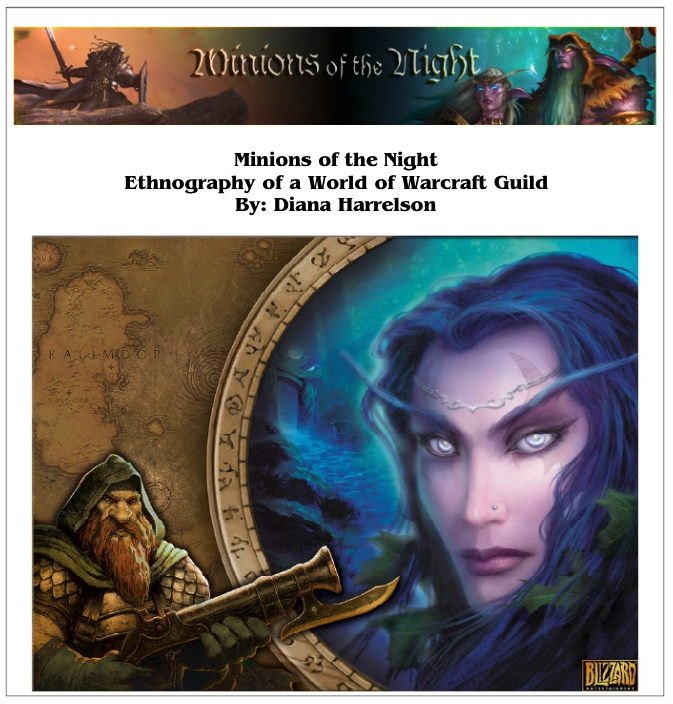
While I was working as a developer, I went back to school in 2004 for my bachelor’s degree. I had to wait until I was an independent student in order to take out student loans on my own (oh if I had known then what I know today). Given that this was now costing a pretty penny, I looked for the fastest way to complete my degree and settled on General Studies where I focused on Anthropology, Psychology, and Philosophy.
Though I didn’t know it at the time, all of that would apply to my career and even my current position. After I started applying my anthropology and psychology lessons to my work, a whole new world opened up. I completed my degree in 2006 and finished with an ethnography of a guild in World of Warcraft as well as an ethnography of ecologically friendly people for Motorola and their EcoMoto project. Being able to do an ethnography entirely online in 2006 and taking a design anthropology class that same semester helped influence my entire academic future (and is what helped to start this blog). Funny side note, my World of Warcraft paper is one of my most referenced papers to this day.
Interaction Design & Information Architecture
Though I had no idea what user experience design or information architecture was when I started my development position, these are where I started focusing my career by the time I was ready to move on. And yes, in both of the following cases, once again someone took a chance on me applying for a job I wasn’t “qualified” for.
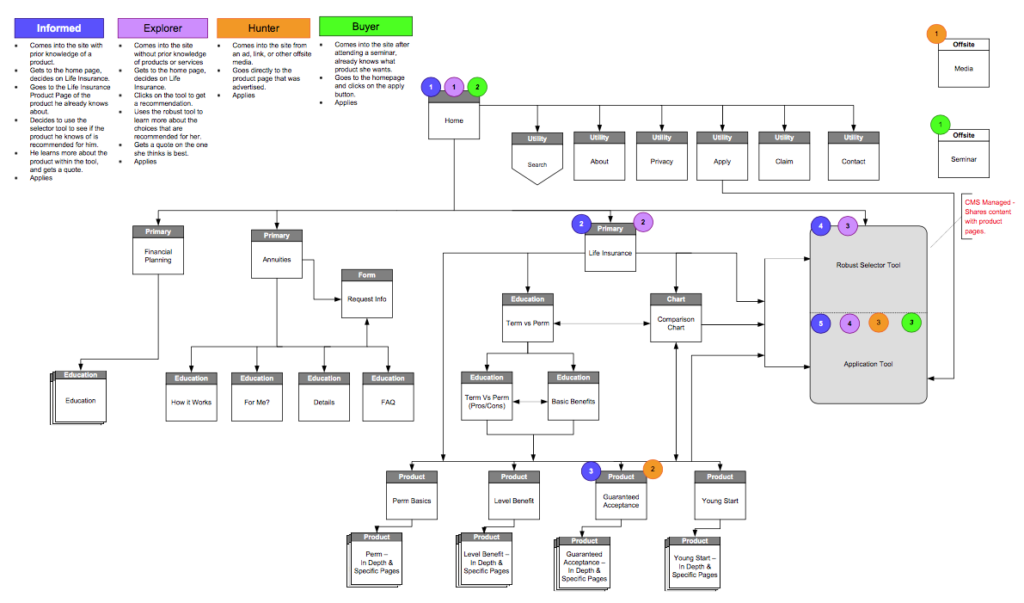
First, I took a job as an interaction designer at a startup. There was just 8 of us working for this company and that was quite an experience. I’m glad I had it, but I’m also glad I was able to land on my feet quickly after as that company was sold after almost a year.
I then moved on to a position as an information architect at a marketing firm that also developed web applications. There, I became a Visio pro and versed in e-commerce. This was the first time I would work as a consultant and travel in that capacity. I worked directly with Lowes at the time and performed activities such as Card Sorts on-site to help them narrow down their navigation categories.
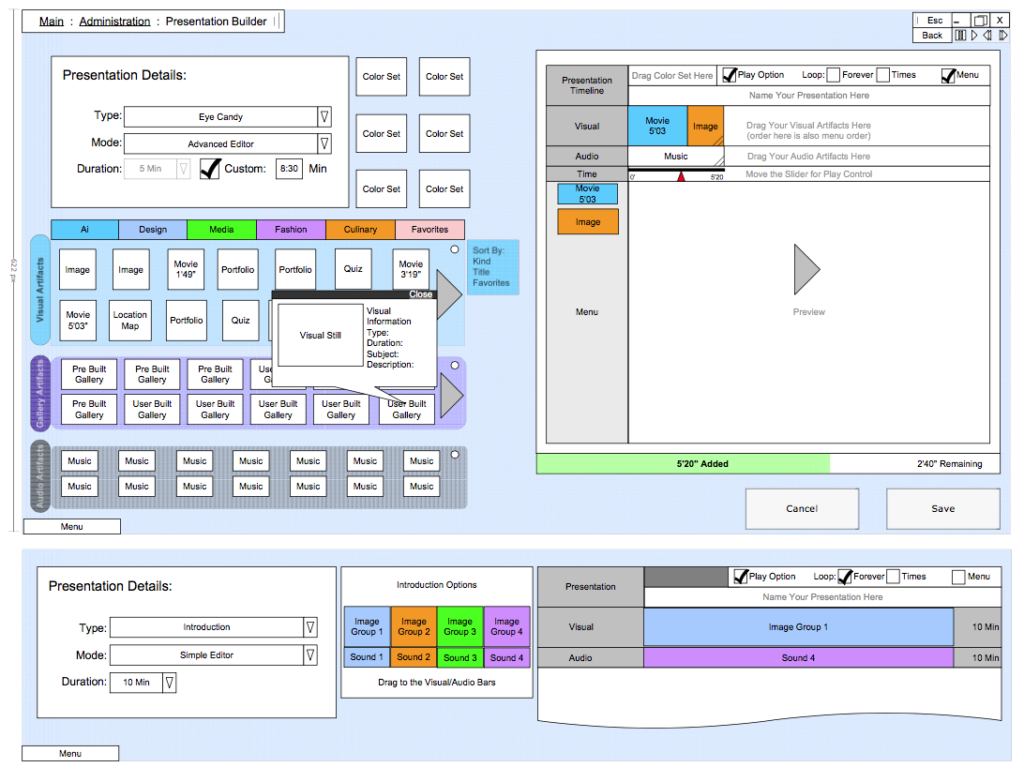
Quickly, the company learned they had gotten in over their head and they let go of most of their e-commerce staff. My talents where agnostic of technology or industry, so I was able to be moved on to other projects and customers like Samsung and EDMC. In that capacity, I designed everything from landing pages to full-on applications created in Director.
The best part about the job was the variety in the work. The worst part of the job was tossing it over the wall to the next team and rarely ever seeing the finished product. I enjoyed my work and I learned quite a lot, but I realized quickly that it wasn’t the type of position I was best suited for.
Masters in Applied Anthropology
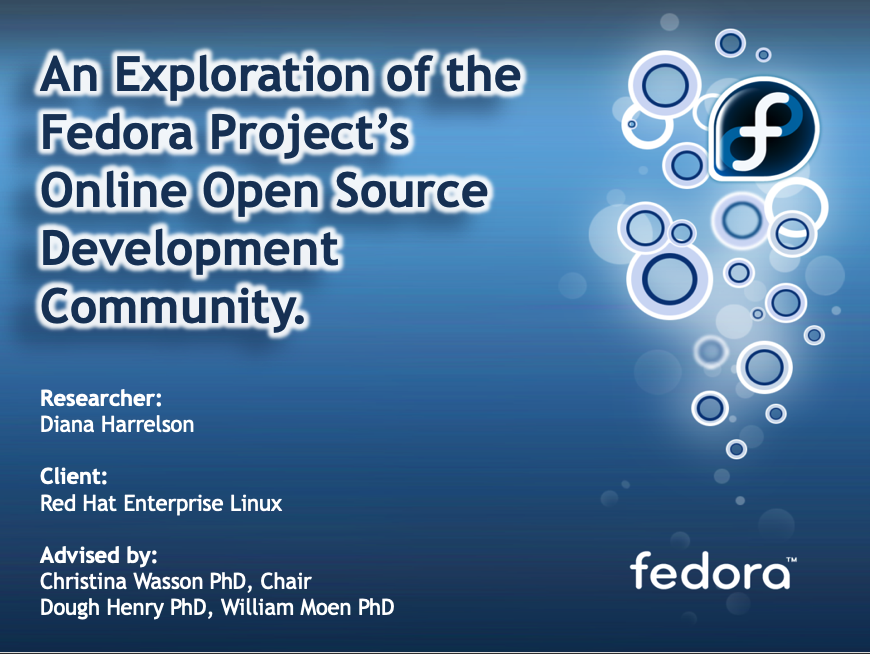
As I moved on from the interaction design position at the startup to the information architecture position at the marketing company, I also continued my education and started my MS in Applied Anthropology where I focused on Business, Organizational, and Design Anthropology. (I also started this blog the same year I started my degree.)
My thesis focused on how to Maintain, Sustain, and Grown Online Open Source Communities where I worked with The Fedora Project through an entire development cycle and conducted almost all of my research entirely online. To do this, I was a participant-observer in the community (IRC/mail lists), I conducted 13 interviews with key informants and then created a survey that had over 100 full responses from over 20 countries. After a full analysis and synthesis, I was able to outline ways the community could help improve itself both for its current members and those looking to become a part of it.
This work was presented to the community in at FUDCon beginning of 2011 and virtually at an open-source conference in Brazil in 2013. It has been utilized and/or cited quite a few times many of which you can see in my Research Mentions portion of my portfolio.
User Interface Engineer
While I was working on my MS, I was recruited from my consultant job at the marketing company to work on an HR software as a service (SaaS) application. The person who hired me was a true visionary and though he didn’t necessarily know what exactly I did, he knew he needed one of me. And yep, you guessed it, yet again I landed a job for which I wasn’t exactly qualified.
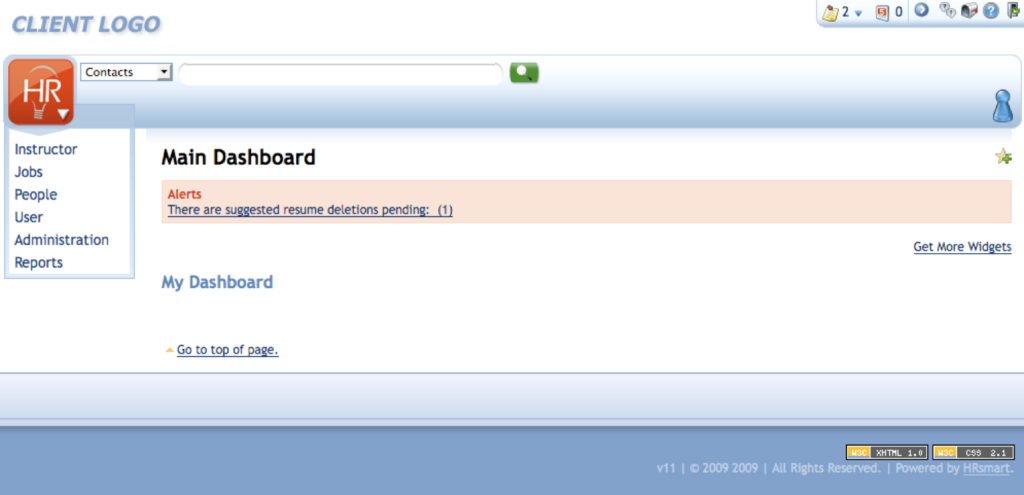
In the full throws of my MS education in anthropology, I pulled out all of my tricks to perform as much guerilla research as I could to figure out what was going on with their current implementation. This included talking to the developers and hanging out in training classes with users. Though I was never given the opportunity to speak to them, I listened to everything they talked about, every question they asked, and every complaint they lodged while undergoing training.
This was an amazing treasure trove of information I couldn’t have done my job without. Based on all of this, I took their completely siloed system (all the way down to the dev teams!) and changed it from a product-focused application to a role-based one that included customized navigation and statefulness. The change in nav was just the beginning of our complete overhaul of the system.
Working for this company was my first introduction to agile (though I’d argue our team of 5 back at my dev job and team of 8 at the startup did it, just not in a formalized way), and it would be the first time I was a single UXD on a very large dev team. These two themes continued at my next job, and I even had a couple of devs follow me over.
Our changes to the system, though drastic, were met with overwhelming success and helped the company win an industry award. You can review the navigation changes in my portfolio for highlights.
Senior User Experience Designer, Information Architect, & Researcher
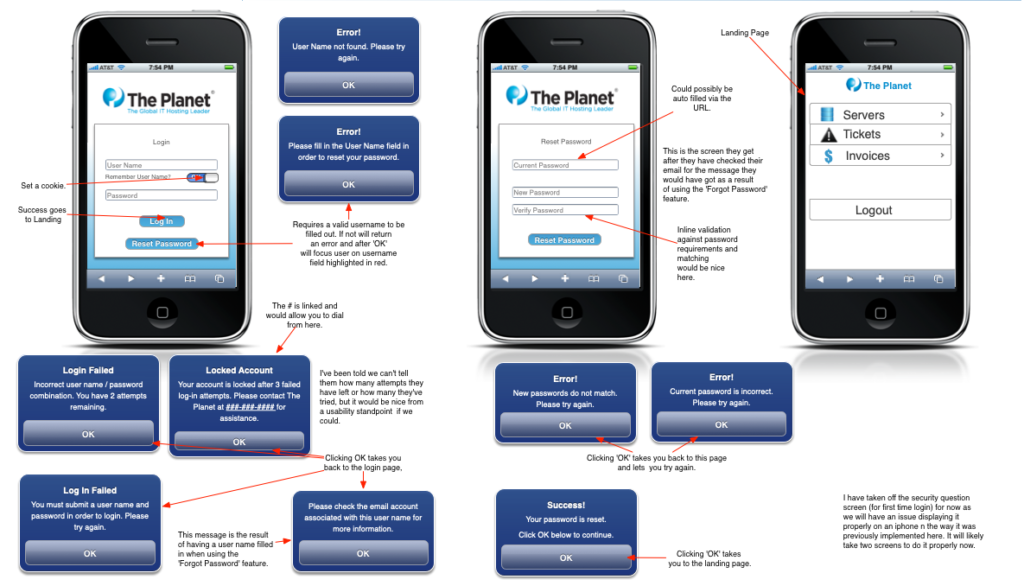
As I was starting up the research for my Master’s thesis at the end of 2009, I was recruited by The Planet, a private data hosting company. Of course, as you’ve guessed by now, I was not qualified for this job. It was there that I designed my first iPhone application (2009!), which was really just a JavaScript wrapper of .Net code. However, it was designed to look and operate like a native iPhone application.
What was essential about this process was getting out a version of our product that would be most useful to our users in a mobile setting. This meant we had to determine what they used the most and why, which of course was a great opportunity for user research. Our research resulted in focusing on the 3 specific categories of Servers, Tickets, and Invoices, which you can see in the example. After this initial project, I went on to completely redesign The Planet’s customer portal interface, which turned into another project altogether when The Planet was merged with SoftLayer.
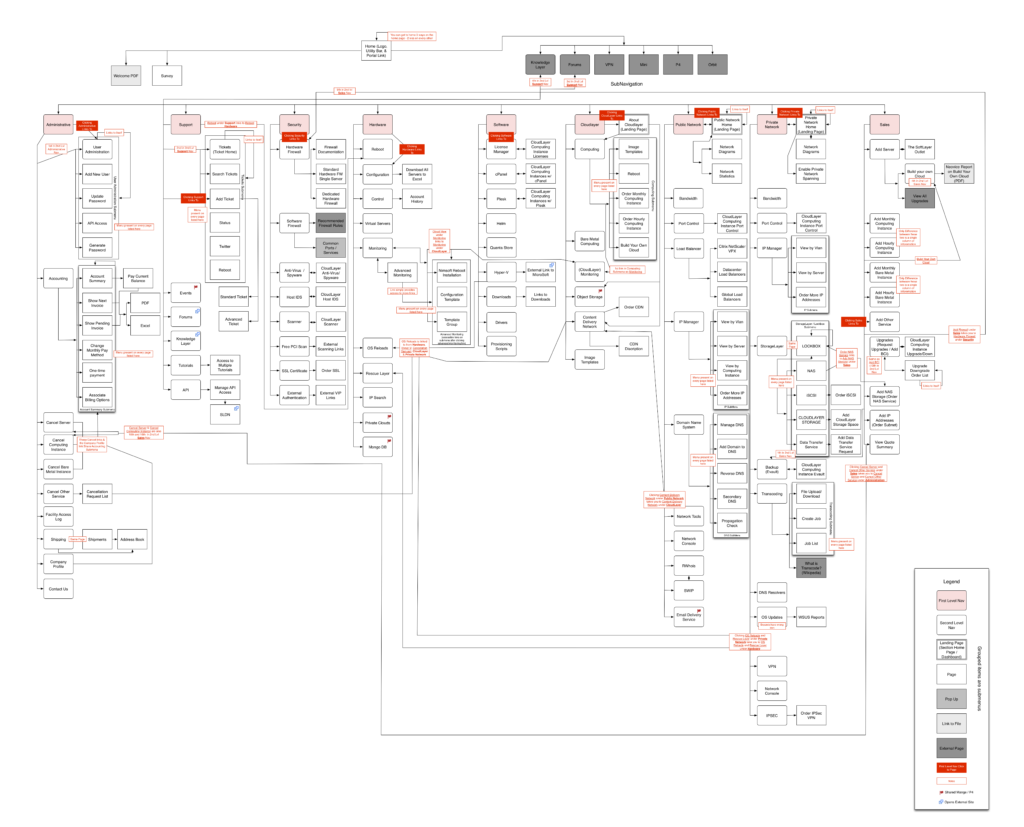
After the merger, it was the job of me and my agile team to go through and merge two separate customer portal systems together. Rather than trying to start with what we already had and create a mishmash (which trust me, never ends well), we started completely over again and utilized user research to build a brand new experience. This included web, mobile, and desktop applications for infrastructure as a service.
In addition to user research (which included analysis of usage as well as user interviews), I conducted a full information architecture inventory on the existing SoftLayer system as that was brand new to me. This way we knew where to start from and it helped me catalog the existing pages and interactions.
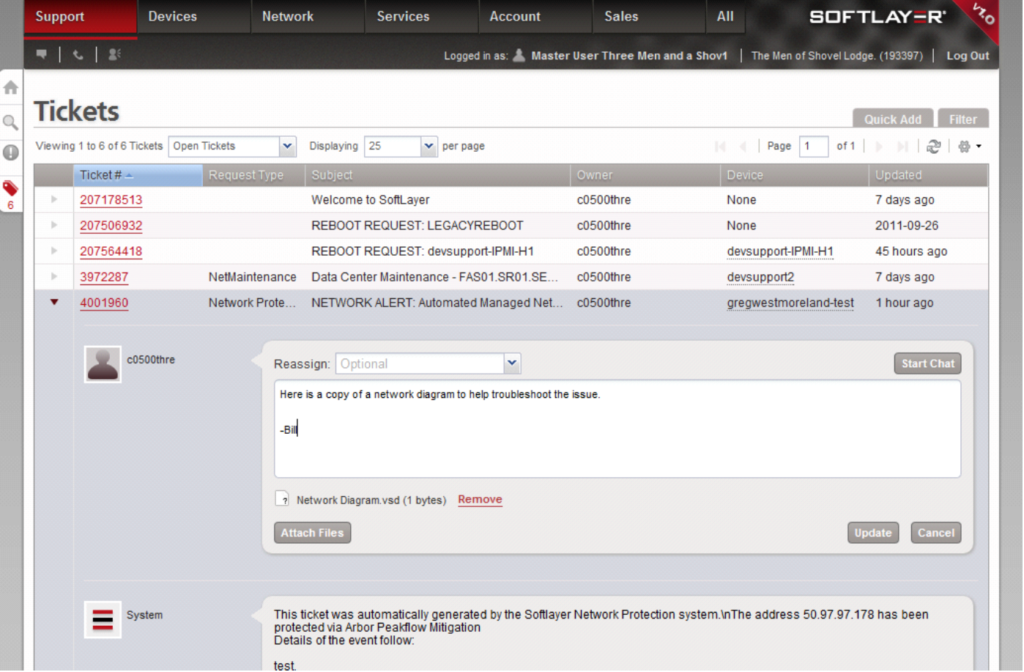
We eventually released our new system and slowly transitioned our current customers off the old ones while introducing new customers to our new experience.
Throughout the entire first phase of this project, I was the sole user experience designer, researcher, and information architect of the entire system. This was the case until 2012 and then I was the senior designer until 2016 (after that I did spot design work/internal consulting until I left in 2018). Throughout that time my team and I created interfaces for all of our infrastructure as a service product ranging from access control to server administration, firewalls, load balancers, a storefront and more.
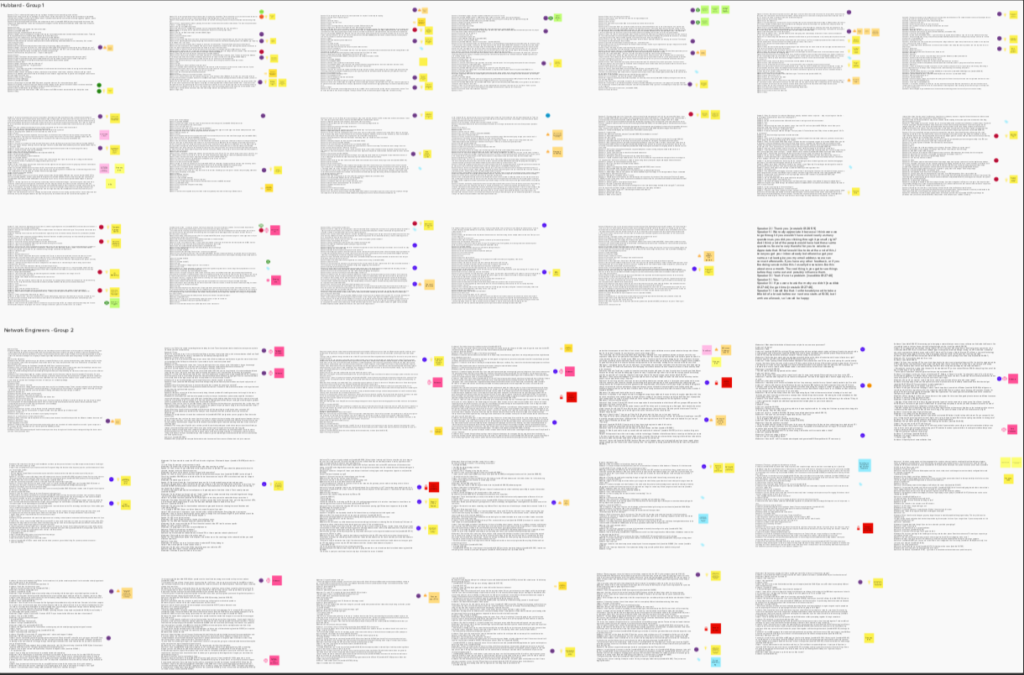
IBM bought SoftLayer in July of 2013 and I was moved over to IBM Design in May of 2016 as Design Lead of Identity and Access Management and Business Systems Support for our Platform as a Service IBM Public Cloud (Bluemix at the time) offering. I did that for a year and then started our own public platform research team from the ground up (including hiring and mentoring).
This team worked embedded within our verticals doing everything from quantitative analysis of auto-collected user data to interviewing major stakeholders and conducting qualitative evaluative sessions with industry professionals. From there, I was promoted to Head of Strategic Insights before I left to pursue a position in Blockchain.
All in all, I worked for those combined companies a total of almost 9 years. There were a lot of ups and downs with mergers and acquisitions and reorgs, but in the end, I’m ever grateful for the experience I gained while working there.
Doctorate in Interdisciplinary Information Science
I completed my MS in August of 2010 with a 4.0 and rolled right into my Ph.D. less than 2 weeks later. I was granted a Doctoral Fellowship for the first 4 years of my degree program, where they paid for my degree, which was awarded based on my previous academic success. Just 3 months later, The Planet and SoftLayer were merged. Professionally, I was up to my eyeballs in information systems, so I decided to focus my studies on the other thing that was near and dear to me – gaming.
It pays to pick a topic you enjoy when you’re working on your dissertation, and the universe knows I couldn’t take any more information systems at that time and stay sane (this really was one of the best decisions I’ve ever made as the ability to go back and forth kept them both fresh and gave me needed breaks from each other). Also, it was a hot topic at the time as in 2010 video games finally made it to the Supreme Court. I won’t bore you with the details of the dissertation, I’ve written other posts on it (and will make at least one more in the future).
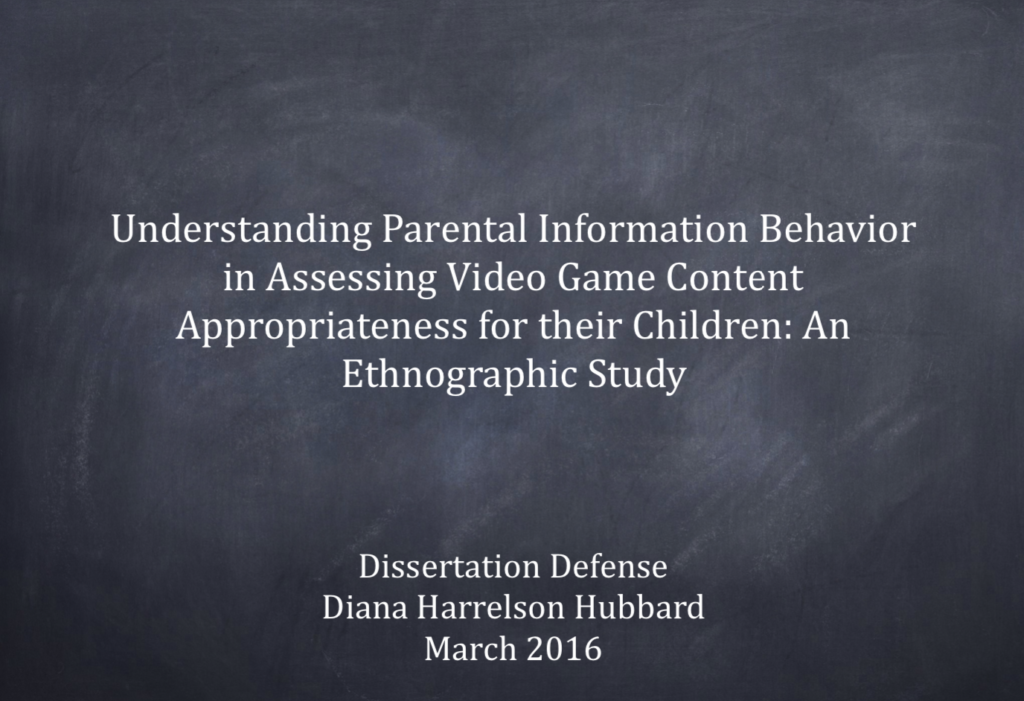
I will, however, provide the research process details. I did a full ethnographic study on families that had children between 4 and 17 who played video games. I interviewed 46 people across 26 different households in May/June of 2015. I then transcribed all of the interviews and conducted an inductive thematic analysis using Altas.ti and over 500 codes. From there I was able to answer my research questions around the usage of the ESRB and whether or not parents felt any legislation was required to assist them in making appropriate video game choices.
I also developed a model on parental information behavior and media that changes as their children age. This is the topic that I will address in a future post. Though it is pretty academic and over 200 pages long, feel free to check out my dissertation. If you like gaming and you’re a parent, you might find it interesting.
Blockchain Design Consultant
After almost 9 years working on what amounted to a single product (through various iterations), I thought I’d try my hand again at consulting. I mean, it had been a decade since I had been a fully external consultant (I had done various types of consulting at in the interim, but not completely external). And, where do you go after SaaS, IaaS, and Paas? Blockchain seemed like the next logical step. It was something new and different and of course something I was not at all qualified to take on. Perfect!

In the last nearly year and a half, I’ve worked with multiple major companies to help them understand what blockchain is and how it could help them influence not only backend systems but also business processes. Though I am not able to talk about any of this due to NDA, I can say I was the designer for the SAP + CONA project mentioned in this Sapphire Now playback. This project included virtual research with the team, a design thinking + design workshop session, creating a fully clickable prototype using Fiori and Build, and working with the front-end and back-end engineers to develop it.
I also had the opportunity to represent SAP at Sapphire where I demoed IOT technology for 400 people over 3 days showcasing our Smart City work. This was in addition to presenting on Design-led Innovation and Inclusive Design (which I will be presenting on again in September at the Big Design conference). Overall, the best part about being in this position is all of the opportunities to learn something new while at the same time helping our customers with truly innovative solutions.
In addition to my Blockchain work, I’m also the owner of Design for Innovation Services including outlining all of our deliverables and scoping. I’m also the project manager for a Knowledge Management initiative as well as an Innovation Management one. Really, I just wear whatever hat needs to be worn at the time and I’m happy to do so.
Teaching & Mentoring
As if all that wasn’t enough, I’m also mentoring a few researchers/designers as they navigate their careers and teaching as an adjunct at the university level. I have to say, out of all of the things I’ve done, teaching and mentoring have been some of the most rewarding.
As you can imagine, one of the things I love to promote is going out and trying something new for which you are completely unqualified. If you’re out of your comfort zone, then you’re learning and growing and becoming something more than you were before. In the words of Nike, Just Do It!
What’s next?
I don’t know what’s next and that’s the beauty of it. All I can hope for in any new opportunity is an environment that encourages learning and mentorship and community and allows me to take advantage of all of these experiences while gaining new ones.
Please reply if you have any comments or questions. I’m also interested in learning about other’s journeys and how you got to where you are today and where you’re looking to go from here (and how you’re going to get there).
If you would like to learn more about my history, check out my CV and Portfolio. My portfolio is a bit sparse due to NDA. So, if you’d like to see more recent work and/or if you would like to connect, you can find me on LinkedIn or you can contact me.
